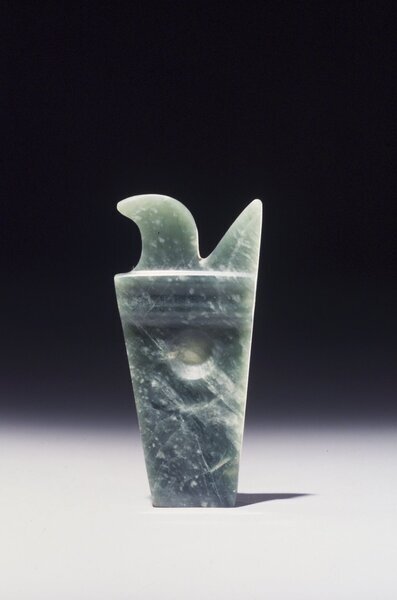Carved Plaque Item Number: L73.15.2 from the Brooklyn Museum

Description
Carved jadeite plaque, trapezoidal in form and crowned at the top with a triangle on the right and curved scroll on the left; parallel lines below are carved in relief and there is a small, round indentation near the top. This object has been identified with headdress ornaments depicted on incised celts, and the form has been interpreted as a corn symbol. Since there are no drill holes, it was probably not attached to a garment or headdress but was more likely placed in a burial as a ritual object. Text by GdeH 9/2011: During the time of the Olmec civilization (800-500 B.C.E.), the first maize imagery appears in the tropical lowlands of south-central Mexico in what are today’s states of Vera Cruz and Tabasco. This Olmec jade amuletic plaque is carved in the shape of what is believed to be a corn symbol. Images carved on ancient Olmec celts show plaques such as this worn in headdress ornaments, however, since there are no holes to facilitate attachment, this plaque was more likely used as a ritual burial object. Precious jade used as a medium to depict a corn stalk suggests that corn, and its attendant symbolism, was associated with the ruling elite.
Credit Line
Collection of Christopher B. Martin
Item History
- Made between 801 BCE and 501 BCE
What
Who
- Culture
- Olmec
Where
- Holding Institution
- Brooklyn Museum
When
- Creation Date
- between 801 BCE and 501 BCE
Other
- Location
- Arts of the Americas Galleries, 5th Floor
- Classification
- Sculpture